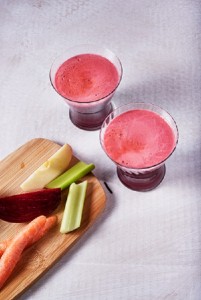Juicing Guidelines for Kidney Patients
Juicing is a concept that has gained momentum over the past 5 to 10 years. But what is it really? By definition, it means to extract the juice from a fruit, vegetable, or both.
Simple enough. Ok, so how do you juice? Well, there are numerous juicing appliances on the market today, each with its own features. There are juicers used by hand, and there are juicers that are referred to as cold pressed and high speed….ok, it’s getting a little complicated.
I searched the word juicing online and got over 13 million hits…whoa. Seems this juicing business just got even more complicated. How in the heck are you supposed to figure out if juicing is healthy or not? There are so many factors to consider when deciding to juice. Before you even choose the fruits and vegetables to juice, there’s figuring out which juicer to buy!
There are many benefits to juicing, but there are also some downsides to it too. Probably the best argument to juice is it provides at least a daily serving or more of fruits and vegetables. A typical serving of “juice” contains 3 or more different fruits and vegetables. And many of us do not consume the recommended number of servings each day. So yes, getting your daily servings of fruits and vegetables is good. On the other hand, with most juicing machines fiber is removed. Insoluble fiber helps to keep us regular—something that is pretty important to prevent constipation and keep the gut healthy.
When you look at juicing through the chronic kidney disease (CKD) lens, you see a different picture. Fruits and vegetables are a main source of potassium. Depending on the type of fruits and vegetables that are juiced, it’s very easy to drink much more potassium than is recommended for a person with CKD. Some juicing recipes contain more than 2000 mg of potassium in just one serving.
Juice is also counted as fluid. Some juicing recipes have between 10 to 15 ounces per serving. If you need to limit liquids be sure to consider how much you consume from juicing.
Even with all these factors to consider, juicing can still be enjoyed if you have kidney disease. Follow these safe juicing practices for people with CKD:
- Stick with no more than 5 fruits/vegetables per serving of juice. Keep in mind that this will likely yield less than an 8 ounce serving.
- Juice with lower potassium fruits and vegetables. Examples include apples, berries, pineapple, carrots, celery, cucumbers and kale.
- For added flavor and nutrients, use fresh herbs and roots like mint, parsley and ginger.
- Ask your dietitian about juicing and what is best recommended for you.
Additional Kidney Diet Resources
Visit DaVita.com and explore these diet and nutrition resources:
DaVita Kidney-Friendly Recipes
This article is for informational purposes only and is not a substitute for medical advice or treatment. Consult your physician and dietitian regarding your specific diagnosis, treatment, diet and health questions.

Recent Comments